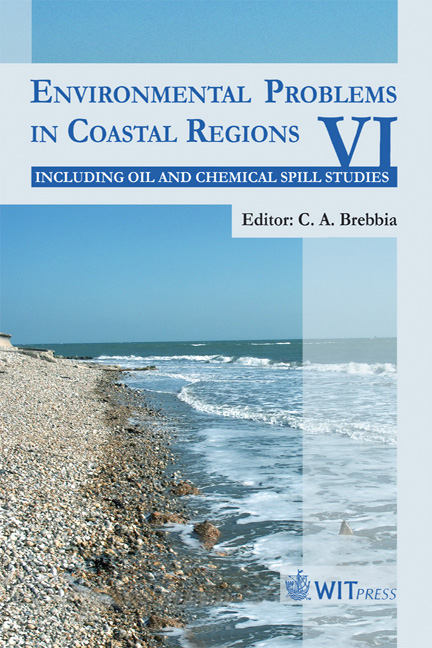Temporal Changes In Sedimentation Patterns Within Haboro Harbor
Price
Free (open access)
Transaction
Volume
88
Pages
10
Published
2006
Size
2,190 kb
Paper DOI
10.2495/CENV060141
Copyright
WIT Press
Author(s)
H. Gotoh, S. Tomaki & M. Takezawa
Abstract
Haboro Harbor is located on the Teshio coast of Hokkaido, Japan, and faces the Sea of Japan. Both sides of Haboro Harbor feature coastal terraces of 20–30 m elevation. The Haboro River flows into the north side of Haboro Harbor. The Haboro Harbor area is commonly buried under sand and silt that has been transported by long-shore drift along the Teshio coast, as well as sediment transported from the Haboro River. In this study, we investigate changes in the sedimentation patterns around Haboro Harbor via cluster analysis of sediments and field-based wave data. We first carried out a cluster analysis of the five predictor variables of coarse sand fraction, fine sand fraction, silt fraction, median diameter of grains, and specific gravity of sediments. The samples were classified into six groups on the basis of the cluster analysis. We then carried out a second cluster analysis using eight predictor variables, adding wave height, water depth, and bottom slope to the five predictor variables listed above. This second cluster analysis revealed five groupings of samples. As a result, we estimated the transportation routes of sediment from the outer to inner Haboro Harbor on the basis of the cluster analysis data, soundings data, and aerial photography. On the basis of the relationship between relative water depth and the Shields number, we classified transported sediments into five groups from the cluster analysis that involved eight predictor variables. Keywords: sounding, aerial photograph, cluster analysis, sediment, Shields number.
Keywords
sounding, aerial photograph, cluster analysis, sediment, Shields number.





